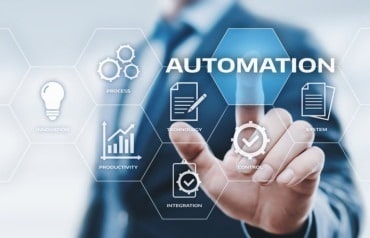
In this week’s real-time analytics news: The Digital Twin Consortium announced an interoperability framework, The Linux Foundation will host the Cloud Hypervisor project, and more.
Keeping pace with news and developments in the real-time analytics market can be a daunting task. We want to help by providing a summary of some of the items our staff came across each week. Here are some of the news items from this week:
The Digital Twin Consortium (DTC) announced the Digital Twin System Interoperability Framework. The framework characterizes the multiple facets of system interoperability based on seven key concepts to create complex systems that interoperate at scale. The seven key concepts include:
- System-Centric Design, which enables collaboration across and within disciplines – mechanical, electronic, and software – creating systems of systems within a domain and across multiple domains.
- Model-Based Approach – with millions and billions of interconnections implemented daily, designers can codify, standardize, identify, and reuse models in various use cases in the field.
- Holistic Information Flow, which facilitates an understanding of the real world for optimal decision-making, where the “world” can be a building, utility, city, country, or other dynamic environments.
- State-Based Interactions – the state of an entity (system) encompasses all the entity’s static and dynamic attribute values at a point in time.
- Federated Repositories – optimal decision-making requires accessing and correlating distributed, heterogeneous information across multiple dimensions of a digital twin, spanning time and lifecycle.
- Actionable Information to ensure that information exchanged between constituent systems enables effective action.
- Scalable Mechanisms to ensure interoperability mechanism(s) are inherently scalable from the simplest interoperation of two systems to the interoperability of a dynamic coalition of distributed, autonomous, and heterogeneous systems within a complex and global ecosystem.
The Linux Foundation announced it will host the Cloud Hypervisor project, which delivers a Virtual Machine Monitor for modern Cloud workloads. Written in Rust with a strong focus on security, its features include CPU, memory, and device hot plug; support for running Windows and Linux guests; device offload with vhost-user; and a minimal and compact footprint. The project is supported by Alibaba, ARM, ByteDance, Intel, and Microsoft.
Lenovo Infrastructure Solutions Group (ISG) announced the new ThinkEdge SE450 server, an artificial intelligence (AI) platform for edge applications. The ThinkEdge SE450 advances intelligent edge capabilities with AI-ready technology that provides faster insights and computing performance to more environments, accelerating real-time decision making at the edge.
PingCAP announced a series of product enhancements and the general availability of TiDB version 5.3, its hybrid transactional and analytical processing (HTAP) database. The new features strengthen the ability to provide both high-volume transaction processing and real-time analytics. TiDB 5.3 offers several new benefits and features, including:
- More scalable online transaction processing (OLTP)
- Increased efficiency and faster HTAP with TiFlash improvements
- Enhanced developer productivity
- Faster data migration capabilities with TiDB Data Migration (DM) and TiDB Lightning.
Katana Graph announced that it has released a high-performance graph analytics Python library in collaboration with Intel. Through full Intel CPU optimization, Katana Graph provides a rich, high-performance library for native graph applications such as pathfinding, clustering, and node ranking, among others. The library can also take advantage of the Anaconda Metagraph orchestration layer that provides a common entry point to graph algorithms.
Soda released its Cloud Metrics Store, providing advanced testing-as-code capabilities to enable data teams to get ahead of data issues in a sophisticated way. Available to all users of Soda’s Open Source (OSS) tools, Cloud Metrics Store captures historical information about the health of data to support the intelligent testing of data across every workload.
Real-time analytics news in brief
Apica Systems announced its unified platform that combines active monitoring and load testing to ensure the health and performance of all applications. Apica’s platform delivers service-level assurance, guaranteeing successful business outcomes on all fronts. The platform provides monitoring with checks on tasks regardless of location, device, app, authentication, or scale.
Iterative announced the latest release of Data Versioning Control (DVC), introducing experiment versioning. Experiment versioning gives developers an easy way to save, compare, and reproduce ML experiments at scale in ways that neither traditional software version control nor existing experiment tracking tools can.
SnapLogic announced updates and enhancements to its Intelligent Integration Platform. The latest improvements include self-service for API consumers; the ability to build data products faster and accelerate analytics projects with enhanced support for leading data warehouse tools; and added features for SnapLogic Flows, the company’s self-service user interface for non-technical business users.
H2O.ai announced the general availability of H2O Document AI, a machine learning service that understands, processes, and manages the large volume and types of documents and unstructured text data that businesses and organizations handle every day.
Partnerships, collaborations, and more
Databricks announced Databricks Ventures, a strategic investment vehicle. Its first fund, the Lakehouse Fund, will focus on early- and growth-stage companies extending the lakehouse ecosystem or using the lakehouse architecture to create the next generation of data and AI-powered companies.
Red Hat announced the Red Hat Ansible Automation Platform on Microsoft Azure. The collaboration between Red Hat and Microsoft delivers a solution where Red Hat and Microsoft customers don’t have to worry about deploying and configuring a solution that can address enterprise-class use cases. Instead, they can start working immediately on complex scenarios like automated OS configuration, application provisioning, network automation, infrastructure as code (IaC), and security orchestration.
Ahana announced Ahana Cloud for Presto’s deep integration with AWS Lake Formation, an AWS service that makes it easy to set up a secure data lake, manage security, and provide self-service access to data with Amazon Simple Storage Service (Amazon S3). As an early partner in the launch program, this integration allows data platform teams to quickly set up a secure data lake and run ad hoc analytics on that data lake with Presto, the de facto SQL query engine for data lakes.
cnvrg.io announced that Habana’s Gaudi AI Accelerator is available on cnvrg.io’s Metacloud marketplace of AI infrastructure solutions. With this availability, AI developers can reduce the cost to train models and innovate faster by optimizing training capacity, effectively merging their on-premises capacity with Amazon EC2 DL1 instances powered by Gaudi accelerators.
Accenture and UiPath announced an expanded business collaboration to help companies boost the adoption of enterprise-wide automation, accelerate technology transformation efforts, and create new growth opportunities. With the expanded collaboration, Accenture and UiPath are growing their longstanding alliance to combine robust automation solutions from UiPath with Accenture’s complementary services and industry expertise.
Veritone announced that it has joined the Smart Electric Power Alliance (SEPA) and the Utility Analytics Institute (UAI). As a member, Veritone will add its AI and deep machine learning expertise to help utility decision-makers solve complex challenges resulting from the rise of renewable energy sources, new legislation, climate change, and the global push towards decarbonization.
WekaIO (Weka) and Hewlett Packard Enterprise (HPE) announced they have developed a jointly-validated, high-performance solution for the most demanding AI and ML workloads. The validated solution is now available on the HPE Ezmeral Marketplace.
Kyndryl and Google Cloud announced a strategic partnership to apply their expertise in data and analytics, applied artificial intelligence (AI), and infrastructure modernization to help accelerate customers’ digital transformations. In addition, Kyndryl’s managed services for Google Cloud will help customers run their most critical business systems on Google Cloud’s infrastructure.
IBM and MuleSoft announced a global relationship where MuleSoft will extend its Anypoint Runtime Fabric to run on Red Hat OpenShift. Additionally, IBM and MuleSoft plan to deliver increased integrations and solutions around the IBM Z product family to support financial services and other mutual customers.
Synoptek announced the acquisition of Rapid Technologies. The deal strengthens Synoptek’s ability to not only envision and implement ServiceNow solutions for its customers but also to provide ongoing application support management offerings that will enable clients to get the most out of their investments.
Tensor Networks and Lanner Electronics announced a new strategic partnership, uniting Lanner’s Whitebox Solutions with Tensor Networks AI Platform. The joint offering combines a modular network platform and state-of-the-art AI processing capabilities for virtualizations in Multi-Access Edge Computing (MEC) applications and other edge computing services for ML, AI, and streaming analytics.
Broadcom Inc. announced its intent to acquire privately-held AppNeta. By combining AppNeta’s end-to-end visibility with Broadcom’s Infrastructure and AIOps capabilities, the world’s largest enterprises running the most complex networks will now have access to a single source of truth to support their cloud journey.
Zaloni announced a partnership with CData Software to provide over 250 data source connectors in the Zaloni Arena platform. The partnership provides extensive real-time data connectivity in Zaloni Arena, expanding data cataloging, governance, and observability across distributed data environments.
Hyperscience announced it has completed the acquisition of Boxplot. Boxplot provides a graph data modeling tool to visualize and better understand customer data and how it relates to other data across an organization. It reinforces Hyperscience’s core proposition of transforming human-readable data into machine-readable data.
If your company has real-time analytics news, send your announcements to [email protected].
In case you missed it, here are our most recent previous weekly real-time analytics news roundups:





























